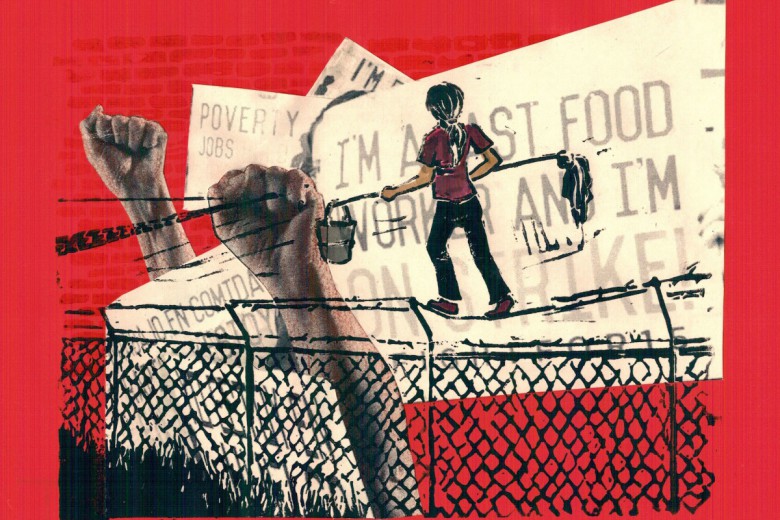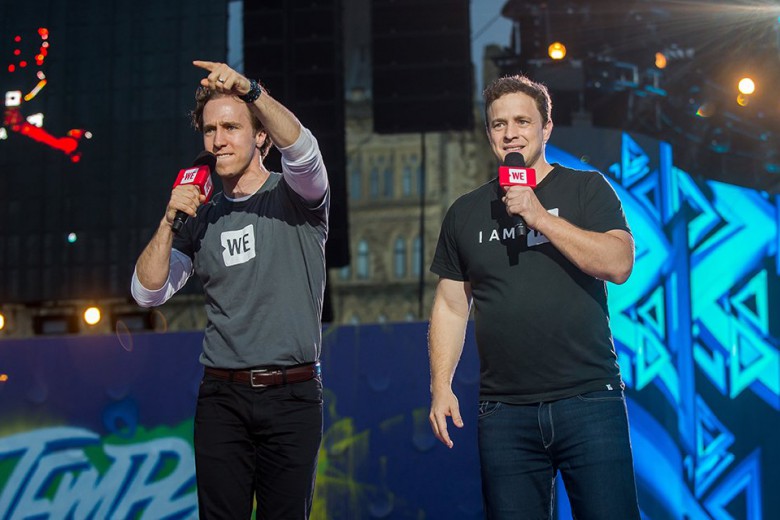“In August 1996, we called for the creation of a network of independent media, a network of information. We mean a network to resist the power of the lie that sells us this war that we call the Fourth World War. We need this network not only as a tool for our social movements, but for our lives: this is a project of life, of humanity, humanity which has a right to critical and truthful information.”
These were the words of Subcomandante Marcos, speaking in 1997 from Chiapas in the midst of the Zapatistas’ guerrilla information war against the Mexican state and the neocolonialism reflected in NAFTA. Marcos’s powerful statement and Zapatista stories of struggle were circulated from the jungle of Chiapas on mailing lists, listservs, and websites, capturing the imagination of activists around the world and galvanizing a wave of new grassroots media projects. Perhaps no project more purely embodied this response than the Indymedia network, which was launched in November 1999 at the Seattle protests against the World Trade Organization (WTO) meetings and quickly grew into a global network of news websites.
As we’ve moved through the years, electronic organizing has shifted from bulletin boards and email lists to more public and accessible websites, and more recently to networked “social media.” This shift has also been one of a migration to more corporate- and capitalist-controlled platforms – a control that leads to pervasive state and corporate surveillance, and which positions us as free labourers for the advertising industry. Organizers have to go to extreme ends to avoid this surveillance panopticon: every email, Facebook post, and tweet bolsters the ability of advertisers to execute targeted marketing campaigns; if this weren’t bad enough, they are also stored in government databases ready to be used to shut down dissent.
With the ever-present distortion of this surveillance-industrial complex, can social movements use corporate social media to truly challenge global capitalism?
We think that to take seriously Marcos’s qualifying statement that our use of the Internet must be in the service of “resist[ing] the power of the lie that sells us this war that we call the Fourth World War,” it will require that we once again build our own tools and radical networks outside the corporate-state system. In the summer of 2016, a group of media and tech organizers from several continents gathered at the World Forum of Free Media in Montreal to wrestle with this question. Many of the attendees have been involved with the Indymedia network, both its early days and its less visible continuations, such as the Indymedia Africa Working Group. We circulated a call in advance of the meeting asking: “What could a global independent media/tech network be in the era of corporate social media?” Out of the responses to that call, we organized a stream of workshops and strategy sessions focused on reviewing and assessing the Indymedia network’s potential and limits, and on discerning what is needed to build safe and anti-corporate media infrastructure, practices, and networked connections that can effectively support social struggle.
Those conversations are summarized here, and we invite you to participate in the next steps.
Roots and reasons
To understand the relevance of Indymedia to these political questions, some history is necessary.
Indymedia is a network of independent media collectives, including journalists, organizers, activists, and tech workers. It sprang to life in late November, 1999, during the WTO meetings in Seattle. As a broad base of environmental, labour, and international solidarity groups came together to organize protests against the WTO, movement media-makers realized we could not rely on the capitalist press to report the substance of these groups’ concerns; the media at the time were extremely critical of protestors and tended to focus on a stereotyped spectacle of violent activists clashing with police at the expense of reporting on social justice issues. To counter this distortion, we created our own media platform that allowed people to deliver their own messages.
Indymedia’s official moniker is the Independent Media Center, or IMC, which is rooted in the physical convergence that took place in this first gathering. The centre set up during the WTO protests provided experienced and novice media-makers alike with the tools to tell their stories accurately and rapidly in the face of corporate media misinformation and police repression. Before these distorted narratives hit the mainstream press, on-the-ground reports from the IMC showing the view from the street were already online.
The energy unlocked by this experience was palpable; suddenly organizers were not only choreographing displays of resistance, but also seeing them in an accessible media forum. We were freed from the alienation of viewing our efforts through corporate media’s distorted and silencing coverage. Those master-narrative stories still appeared, but their illegitimacy was made apparent by the real news stories featuring the concerns that propelled people into the streets. Corporate media had to backtrack on their parroting of police claims to not be using rubber bullets when IMC reports provided proof that they were. The IMC became ground zero for the counter-narrative of the Battle of Seattle.
The roots of this success ran deep. Decades of movement media work had preceded Indymedia: participants came with experience from the anti-war underground press, labour news outlets, the feminist movement and women-run presses, the pirate radio movement, and many other milieux of cultural contestation.
But the level of collaboration that came to fruition in Seattle was largely possible because of a unique confluence of traditional “old” media-makers and a bevy of young technology workers with key skills and resources that the global economy was gearing up to harvest for profit. These technologist-organizers worked collaboratively to coordinate access to the most cutting-edge technology. The IMC in Seattle and other early Indymedia convergence centres offered regular people, living their lives outside of academia and the technology elite, a chance to experience high-speed Internet, digital photography, website development, and the coordinated use of cellular technology to maintain communication.
Even more significantly, some of these technologists put their labour power toward developing a web interface that would enable regular people to immediately post stories. This concept is ubiquitous now, but at the time, websites were mostly managed by a single “webmaster” who coded the sites manually. Indymedia programmers built one of the first fully featured and interactive interfaces, one that enabled a public with minimal technical skills to contribute content that was automatically incorporated into a local Indymedia website. We called it open publishing, and it became a hallmark of Indymedia. Originally based on a codebase called “Active,” open publishing was first developed in Sydney, Australia by the radical tech collective Catalyst. Active was developed for the worldwide June 1999 Carnival Against Capitalism protests, whose slogan was “Our resistance is as transnational as capital.” New versions of the code were developed in the run-up to Seattle and eventually morphed into other codebases and concepts that we now consider the building blocks of the modern web: content management systems, blogs, and user-generated content.
A network and a social movement
Within a year, IMCs were forming on six continents, often in conjunction with protests. By 2000, both Indymedia and the Global Justice Movement were at their heights. Whenever the forces of transnational capital held a summit, the Global Justice Movement was present and Indymedia reported on it. With such momentum, requests for new IMCs were coming in faster than tech workers could set them up.
It quickly became clear that organizations outside of an autonomous-left, grassroots perspective also wanted to make their own media – including right-wing organizations, political parties, and NGOs. Many of the original IMCistas, who identified as anarchists or other radicals, became concerned that the network would grow without clear opposition to the forces of neocolonialism and status-quo accommodation. We knew we needed to define our politics – and soon.
In April of 2001, around 150 Indymedia organizers from all over the world met in San Francisco to finalize our principles of unity and criteria for membership – documents that laid the groundwork for the politics of the network and the process for joining. They called for: open publishing; a not-for-profit, decentralized network of autonomous collectives; participatory decision-making processes at the local level; non-hierarchical and anti-authoritarian relationships; using free and open-source software wherever possible; and non-discrimination based on race, gender, age, or sexual orientation.
The solidification of the network structure and principles formalized Indymedia’s role as a social movement for revolutionary change. We weren’t objective in the corporate journalism sense; rather, we were transparently and definitively non-neutral. We were a social movement, not just “social media.” Our goal was to make informed solidarity the binding force against a common foe: an economic-war system with insatiable appetites on a finite planet. The mission statement on the global page crystallized it: we were interested in “radical, accurate, and passionate tellings of the truth … despite corporate media’s distortions and unwillingness to cover the efforts to free humanity.” In the words of John Ross, we were rebel reporters.
The rise of corporate social media
For-profit media-makers wasted no time in co-opting open publishing technology. Shortly after its deployment by activists, the code for the site was picked up and incorporated into mainstream press experiments, with adjustments made to give owners editorial control. The basic concept of user participation in content creation quickly became the new standard of website development, and companies and resourced NGOs began paying tech workers to hone these tools. The process of privatizing and repurposing social movement software and ideas was underway. Under the cynical language of freedom of expression, movement software and its ideas were being repackaged for profit and surveillance, eventually settling under the auspices of “social media.”
Through the wild popularity of social media interfaces like Facebook, YouTube, and Google, user data has become the primary tool for transferring money from the poor and middle classes to the elite. The industry term for this process is data-mining: users gain access to free services in exchange for giving companies the right to watch their behaviour and use it in market research that will then inform advertising strategies. This coordinated state/capitalist mechanism for siphoning the people’s knowledge turns users of social media into unpaid labourers for corporations. Ironically, this trend has occurred at the same time that activists have become highly adept at using these social media interfaces to deliver messages of dissent and liberation to a mass audience. Many organizers now actively direct their constituents to these platforms. Far from being just a matter of “mainstream taste,” it is propelling the motor of global capitalism from the coltan mines of Congo to the sweatshops of China and beyond.
The political-economic motives embedded in the development of these user-driven forums have been obscured for many in the Global North/Minority world by the experience of liberatory connection that accompanied the Internet’s early deployment. But the ruling class funders know what they are doing. In 2008, the Guardian reported that Greylock Venture Capital, whose senior partner sits on the board of the CIA’s venture capital wing, In-Q-Tel, invested US$27.5 million in Facebook. Now all Facebook posts, texts, and email are stored in National Security Agency databases, and cellphones serve as tracking and surveillance devices that users willingly pay for. In the Global South/Majority world, where deployment of the technology is still underway, the profit motives are currently front and centre: one investor recently referred to the user data captured through social media as “the new oil.”
Repression with the aid of corporate-state surveillance has become evident to a wider audience recently with revelations of how Black Lives Matter organizers and water defenders at Standing Rock have been targeted thanks to data sold to law enforcement by companies like Geofeedia.
Recently, Facebook and the state of Israel entered into an agreement to “work together” to monitor Palestinian posts. So far, dozens of Palestinian journalists have been arrested and detained in Israel for alleged incitement charges stemming from posts on their Facebook pages. Hundreds of other Palestinian activists and bloggers have been targeted for arrest and prosecution. The Intercept recently reported that Facebook accepts 95 per cent of Israel’s requests for censorship.
Within the Indymedia network, principled tech workers have from the get-go pushed for and applied tactics designed to resist corporate-state co-optation within the structure of our technical platforms. They argued that all IMCs should prioritize using free and open-source software instead of for-profit tools, and succeeded in incorporating this standard into the network’s principles of unity. They also made it impossible for Indymedia websites to be used to collect or store data from users – thus making it unavailable for seizure by state or corporate interests – and have even defended this practice against legal threats. These were not easy standards to assert and defend, because companies were contantly deploying new technology in increasingly user-friendly formats, all based around the opposite logic.
Many “non-techies,” both within Indymedia and the broader movement, didn’t understand the political and economic logic of these alternative practices. To the uninitiated, they seemed rooted in an arcane manner of thinking that reified correct technology as a “goal.” Many dismissed the thinking as coming from a perspective of privilege. But as the industry’s logic has revealed itself, a growing number of us have realized the larger goal within which these principles were asserted.
Holding out for un-alienated communication
Organizers who had initially embraced corporate social media, and those who critiqued it, are now faced with a challenge. How do we establish a principled approach to social media without squelching the power that movements have recently gained through appropriating these tools? What sort of network or structure is needed to support such a project? As we dug into these challenges in Montreal, we found they raised a lot of related questions.
In the late 1990s, we approached a parallel challenge with a strategy that said, “Don’t hate the media; be the media.” In so doing, we redefined the very nature of media from being a tool of mindless repetition of the master narrative to a space between, and beyond, the narrow confines of the capitalist press. Today, as the intent and scope of the surveillance–industrial complex become increasingly apparent, we see that our challenge is not to hate the social but to “be the social.”
Another way to put this is that dominant social media has obfuscated what it means to be social. An emancipatory definition of this term would counter all forces that harm our social fabric. Social should refer to how we work with each other to bolster social struggle, not to further consumerism, alienation, and capitalist accumulation. Our task, then, is to rediscover the power of solidarity, mutual aid, and an ability to communicate in a way that empowers not only us as individuals, but also as members of a worldwide community engaged in social struggle.
Our meetings in Montreal were an effort to kindle this spirit, and to revive the will to form a global network of tactical and networked media to undermine neoliberalism. As these conversations unfolded, so did a flurry of ideas about how we can step up our game to honour the demands of the situation we are now facing. Here are some of the main points that emerged:
- How can we promote dialogue within the movement around the political economy of media and technology, and especially about the role of corporate-state agendas in shaping the “social media” sphere? We discussed framing the work of replacing corporate tools with movement tools as a method of decolonizing our media.
- How can we better address the ways privilege and oppression have played out in Indymedia, and especially how the disempowerment of women and people of colour has divided tech workers from much of the movement.
- Which comes first: technology or movements? Technological innovations are most successful when they are developed co-operatively and in conversation with communities of resistance. Specific conversation began around a corporate-free live streaming app.
- We want to celebrate and build on Indymedia’s organizational documents (mission statement, principles of unity, and admissions process) to ensure that our anti-oppression, anti-capitalist, and anti-hierarchical commitments are directly stated, and that the operational implications to these commitments are delineated.
- We discussed developing a process for supporting media and tech workers in impacted communities who are targeted with violent retaliation by governments and capitalist interests.
- We would like to facilitate more face-to-face meetings – and not only in conjunction with major mobilizations – in order to sustain these commitments; brainstorming took place around the possibility of a 2017 convergence in Mexico.
To move toward these visions, we formed a number of working groups, and we invite your participation in them. Some of these working groups overlap with teams already active in the Indymedia network, and in other movement contexts. Through the World Forum of Free Media’s assembly process, we tried to identify overlaps and common goals, and we would welcome uniting with other groups who were not present at WFFM.
This work is currently being coordinated through the following means:
- a newly created website that contains documentation of the Indymedia Montreal Convergence: la.indymedia.org/converge
- two email listservs that facilitate announcement-level updates: la.indymedia.org/mailman/listinfo/indy-share and/or active participation.
- regular online meetings are being held on Internet Relay Chat (IRC)
- general inquiries can be directed to [email protected]
We came away from the Montreal meetings with a renewed commitment to build on the successes of Indymedia by increasing the clarity, commitment, and coordination of all of our efforts. We do not know what Indymedia will look like going forward … what we do know is that it will take a collective effort to imagine and build it. We hope you will join in!







